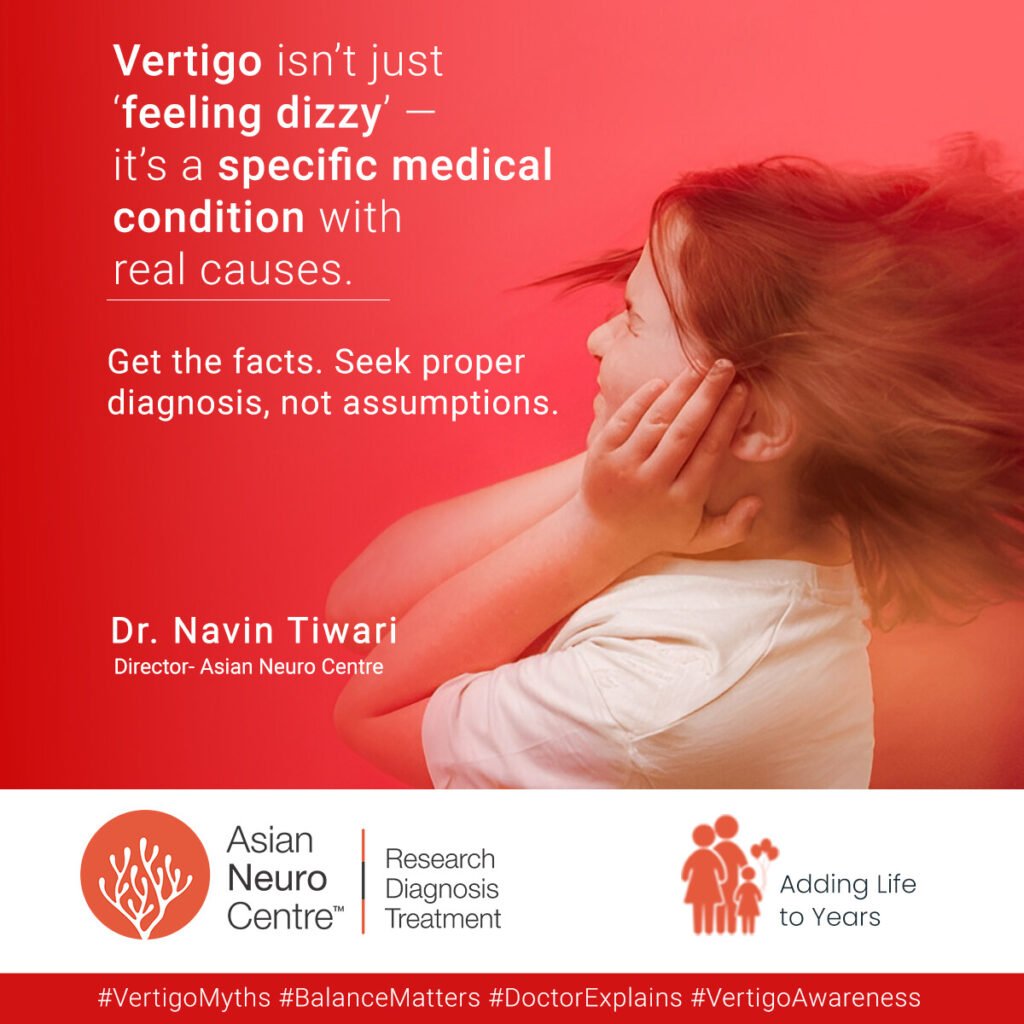- Have any questions?
- 911 12345 29
- info@asianneurocentre.com
What are Common Misconceptions About Vertigo?
Best Treatment for Vertigo in Indore | Vertigo Specialist in Indore | Dr. Navin Tiwari
April 9, 2025How the Inner Ear Affects Your Balance and Causes Vertigo?
April 24, 2025Vertigo is a medical condition that causes individuals to perceive that either their world or themselves is spinning. Vertigo is not an illness but just an indication of some other problem in the body, particularly in the brain or inner ear.
Vertigo is not well understood by most people, and they tend to think incorrectly. These incorrect beliefs make it increasingly difficult for individuals to seek appropriate assistance.

What are Common Misconceptions About Vertigo?
Here we discuss some of the popular wrong beliefs regarding vertigo and clarify them in very easy, straightforward language.
Misconception 1: Vertigo is not Just Feeling Dizzy
A number of individuals believe that vertigo and dizziness are identical, but they are not. Dizziness refers to a feeling of being weak or lightheaded. Vertigo is a sensation that causes you to believe that objects are whirling around you even if they are not. It causes you to feel unbalanced or like you are falling. It is not just a sense of getting dizzy.
Misconception 2: Vertigo is exclusive to elderly people
While it does tend to occur with greater frequency in older individuals, vertigo can strike anyone. Even teens, children, and younger people can suffer from vertigo. It just relies on the underlying cause, not their ages. Inner ear issues, head trauma, or infections can trigger vertigo in individuals of all ages.
Misconception 3: Vertigo is a Long-Term Disease
A lot of folks believe that if you have vertigo, you’ll have it for life. But that’s not so. Some forms of vertigo cure themselves or require minimal treatment. Others require a physician’s assistance, but with time, they’ll get better. Vertigo is a symptom, not an illness for life.
Misconception 4: Vertigo does not have a Cure
This too is not accurate. Vertigo can be treated in many different ways. Physicians can prescribe medicine, exercise for the head that is easy, or therapy. Modifications in lifestyle or diet may also decrease vertigo in some individuals. Always consult a physician for the best advice.
Dr. Navin Tiwari
Consulting Neurologist
